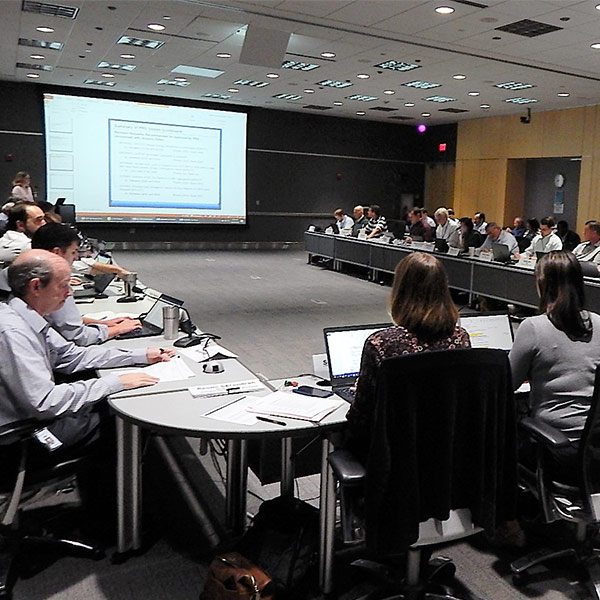By Tom Kleckner
LITTLE ROCK, Ark. — An August energy emergency alert (EEA) that had SPP one contingency away from shedding load has renewed calls for scarcity pricing or other measures to ensure adequate reserves.
Unplanned outages, low wind and a bad forecast combined to create tight operating conditions on Aug. 6. That forced SPP to call its first EEA since becoming a consolidated balancing authority in 2014. The RTO resolved the situation by calling on 478 MW of grid-switchable resources in ERCOT and curtailing up to 127 MW of non-firm export capacity. (See “Staff Evaluating Procedures After Aug. 6 EEA,” SPP Seams Steering Committee: Sept. 11, 2019.)
“We had no other generators,” SPP Operations Director C.J. Brown told the Markets and Operations Policy Committee on Oct. 16. “We maintained that day just fine, but one more contingency and we would have been at a higher level of EEA. We would have been turning the lights off, and that’s close to me.”
SPP’s load peaked at 49,389 MW on Aug. 6, a little more than half of its nearly 90 GW of nameplate capacity. However, wind production was at only 7% of its 22.3 GW of installed capacity.
Brown said generation outages have become commonplace during recent summers. MOPC members suggested wear and tear from fossil units cycling and up down to meet demand has much to do with that, a notion Brown agreed with.
“These are machines. They’re not going to run 24/7, 365 days a year,” he said. “We see a definite uptrend of planned outages over the summer. We want to look at that. It doesn’t seem to be an anomaly. Why are we seeing more planned work in the summer? What’s the driver? Can we do anything about it? We want to look into it further, and we need your help with that.”
SPP has suggested creating a generator outage task force to assess trends and potential causes, making improvements to supply adequacy requirements, and verifying assumptions in loss-of-load expectation planning studies. It is already trying to determine its real-time capacity, as opposed to planning capacity, and working to develop more specific declarations beyond EEAs, weather alerts and calls for conservative operations.
The Market Monitoring Unit has proposed reliability pricing rules during EEAs and maximum generation events to incent generator performance. Noting that day-ahead prices barely reached $25/MWh during July and August, the Monitor’s Greg Sorenson said market prices did not reflect emergency conditions because capacity commitments and generation added to address the conditions frequently lowered prices.
“If SPP wants generators to be available during an emergency, prices do not reflect that,” Sorenson said. “Other markets have rules that incent generation.”
While real-time prices briefly spiked to nearly $1,500/MWh during the August EEA, Golden Spread Electric Cooperative’s Natasha Henderson questioned the market’s price formation.
“I see a lot of sticks and not enough carrots,” she said.
Listening to the discussion, Mike Wise, Golden Spread’s senior vice president of regulatory and market strategy, stood and delivered an impassioned speech on the value of scarcity pricing. It’s a mechanism he is very familiar with, as Golden Spread also operates in ERCOT.
“I’m going to use the s-word that is not popular with many of you sitting here today,” Wise said. “Scarcity pricing works. Although several here will disagree, I believe we need to consider moving towards this strategy for our pool.”
While scarcity pricing may be sacrilegious to some in SPP, Wise pointed to ERCOT’s ability to meet record demand this summer despite similar wind-energy shortages that led to tight operating conditions. He said the lack of price-responsive load in the SPP market could be because of “market prices not reflecting the actual scarcity.”
The ERCOT “market is seeing price-responsive loads taking the price signals and curtailing themselves,” he said. “This summer … saw over 3,000 MW of price-responsive load get off across their peak as the reserves were getting low and the price adders for the lack of reserves made the market price go very high. So, if prices in the SPP were allowed to correctly reflect scarcity of reserves, then those utilities would find it in their best interests to change their maintenance plans.
“This market has got to change, and soon, as we continue to add all these intermittent renewable resources, and our legacy generation assets are used less and less for actual energy and more for reserves and market support,” he said.
MOPC Chair Holly Carias, with NextEra Energy Resources, emailed committee members last week to request their feedback and next steps on staff’s and the MMU’s recommendations.
“We want to work with our stakeholders,” Brown said. “That makes the most sense.”






